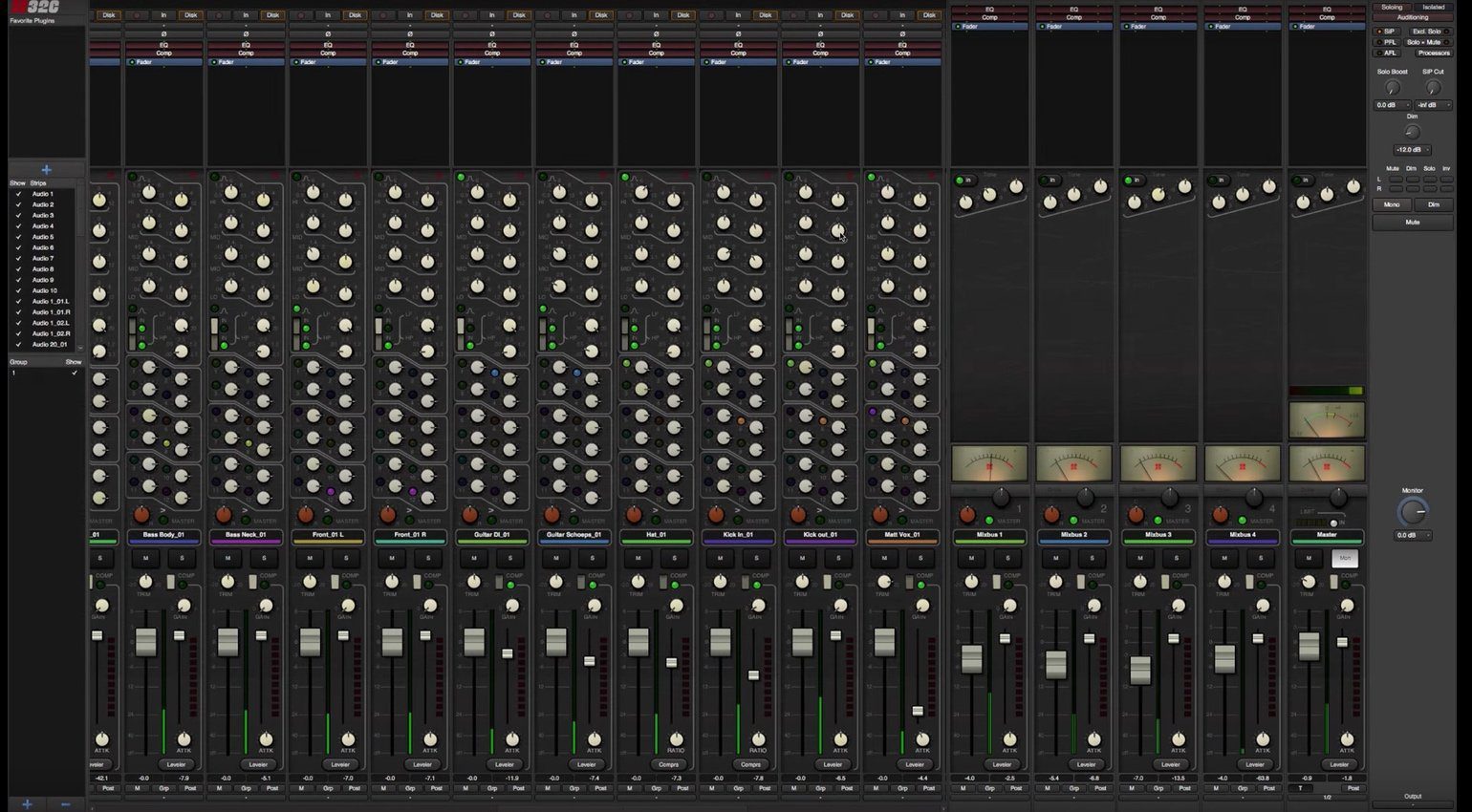
Try a ratio of 2:1 to gently compress your mix as a whole and softly squeeze the instruments together. The key to mix bus compression is subtlety. It helps maintain consistent levels, prevent peaking, and increase excitement. Mix bus compression is all about “gluing” tracks together.

Once you have the tonal balance of the track locked in, it’s time to glue things together with a little compression.
#GEARSLUTZ MIXBUS HOW TO#
Not only does BASSROOM compare your track to professional mixes, but it also makes suggestions on how to get the low end to sit right. The most common problems typically occur in the bass frequencies, which is why BASSROOM is perfect for mix bus processing. REFERENCE takes the guesswork out and shows you exactly which frequencies you need to adjust. If you’re having trouble identifying which remaining frequencies to cut and which frequencies to boost, try using REFERENCE to compare your track to professional mixes. We've got a complete guide to that here.Īdd a little sparkle to your tracks with a high shelf boost around 8-12 kHz. Try using a low shelf to boost the bass for a little extra oomph and a high-pass filter to remove unwanted subs.Ĭutting any mud around 200 Hz, or boxiness around 400 Hz is often best done with a dynamic EQ. If you need to make any surgical changes, address the issue on the individual track. Don’t boost or cut more than 3dB, and be sure to use soft, gentle shapes for subtle changes. Just remember, small EQ moves make a big difference on the Mix Bus. Or enhance pleasing elements, like shiny cymbals. But it’s not uncommon to make a few small tweaks here or there on the Mix Bus.ĮQ can be used to tame overpowering elements, like boomy kick drums. Most of the frequency balancing should be done in the mixing stage. Now that you know how to set up a mix bus, it’s time to break down the most common mix bus processing plug-ins. If you’re already using busses for other channels, just route the output of each instrument bus to the Mix Bus.Īdd plug-ins to your new Mix Bus whenever you need to tweak the sound of your whole mix. Then route the output of each channel to the input of the Mix Bus. Simply create a new auxiliary channel or bus and name it Mix Bus. Instead, you should use mix bus processing to turn a good mix into a great mix. That way you don’t also cut the low-end on the other bass instruments in your mix. You shouldn’t use mix bus processing to try to correct problems in your mix-just go back and fix them!įor instance, if you notice that the kick drum has too much low-end, just go EQ the kick drum instead of the mix bus. Just because you can affect the mix doesn’t mean you should. Since mix bus processing affects your whole mix, it can be easy to over-do it.Īs they say “with great power comes great responsibility.” The key to mix bus processing is to use gentle settings. It can even be used for adding automation.

Or “glue” tracks together with compression for a more cohesive feel.

Mix bus processing can be used to tweak the tonal balance of a mix. It’s the coat of polish on your new guitar. It’s the cherry on top of your ice cream sundae. Instead of adjusting individual tracks, you use tools like EQ, compression, and saturation on the whole mix. Mix bus processing is just a fancy word for fine-tuning your mix as a whole. What Is Mix Bus Processing and Why Should I Use It? Keep reading to learn what plug-ins and settings to use to give your tracks that radio-ready sound. In this blog, we’ll teach you everything you need to know about mix bus processing.

That’s where mix bus processing comes in. It still sounded like a recording instead of a song. When I first started mixing, I remember thinking: “How do I know when my mix is done?”Įach of the individual tracks sounded good on its own, but my mix just didn’t sound finished.


 0 kommentar(er)
0 kommentar(er)
